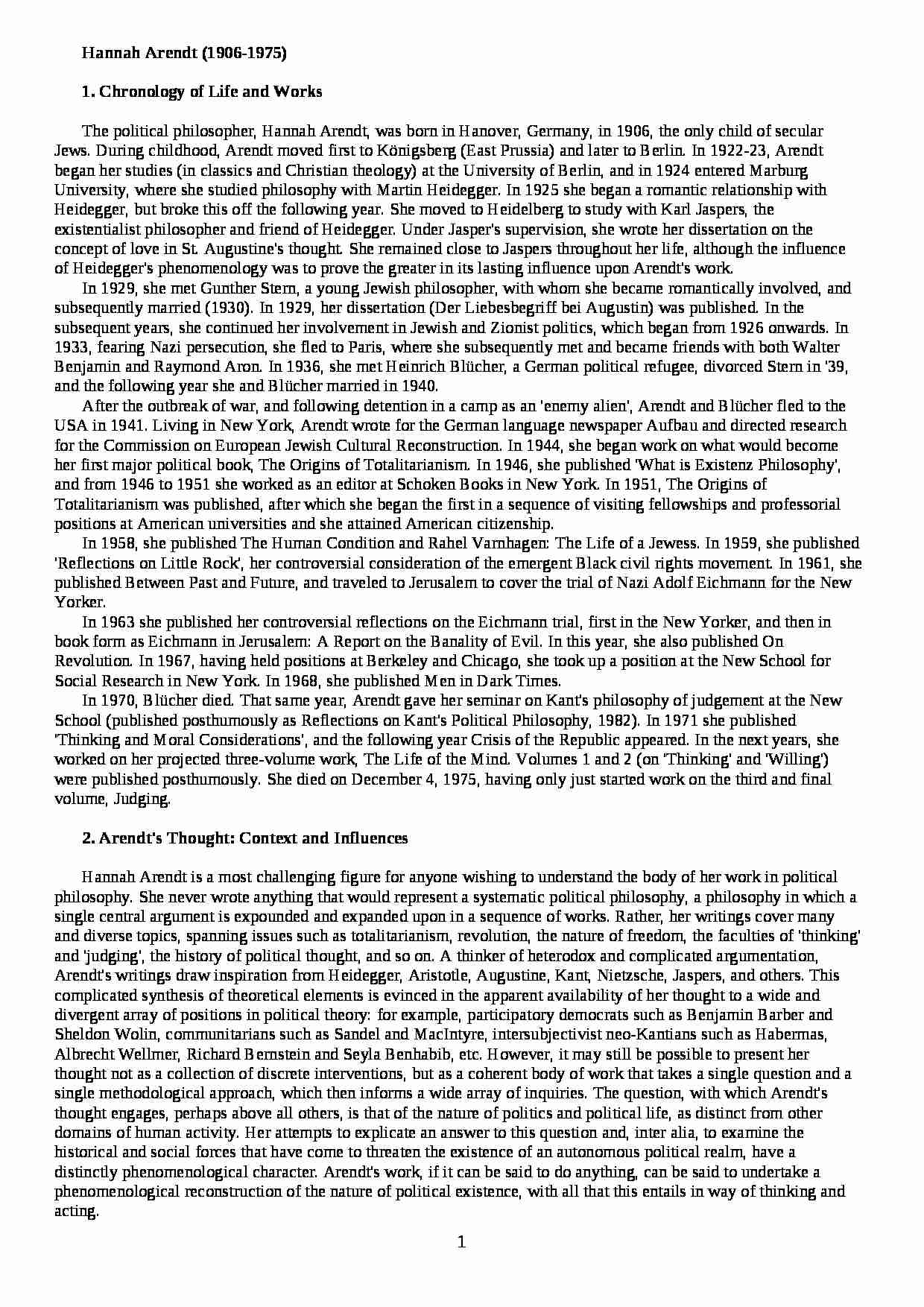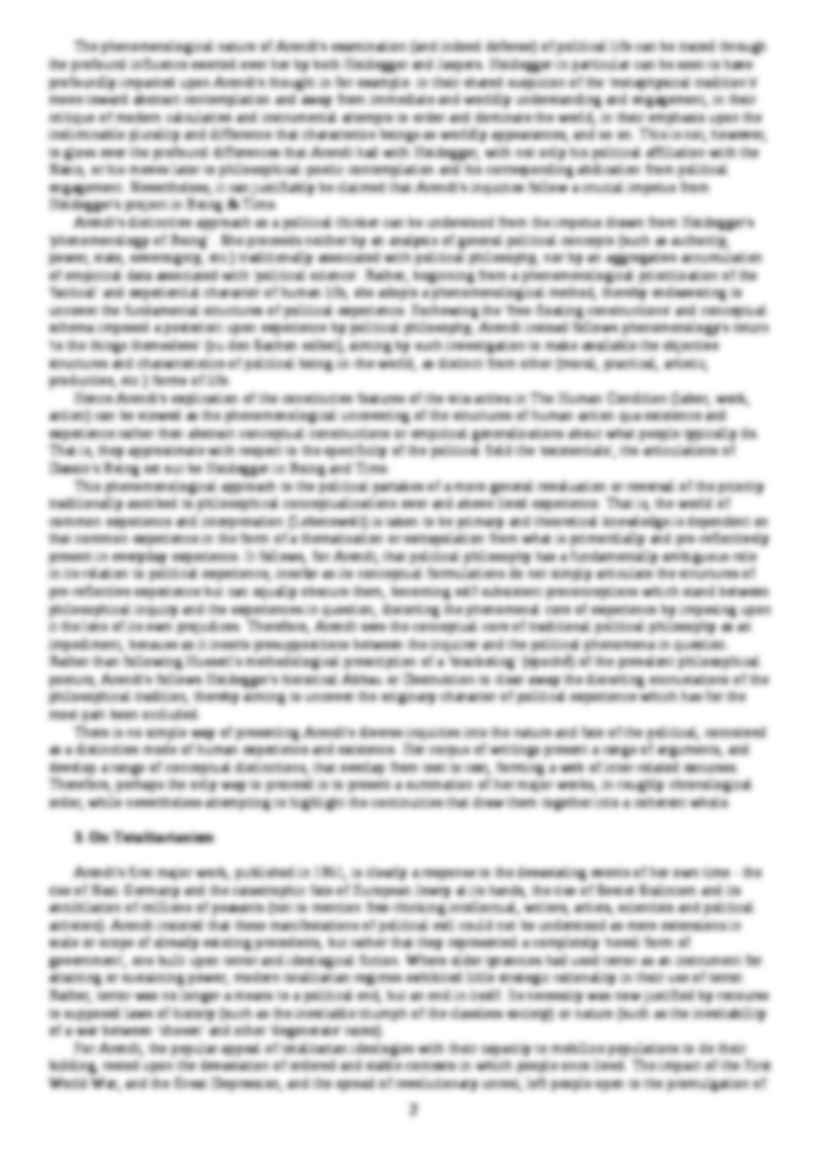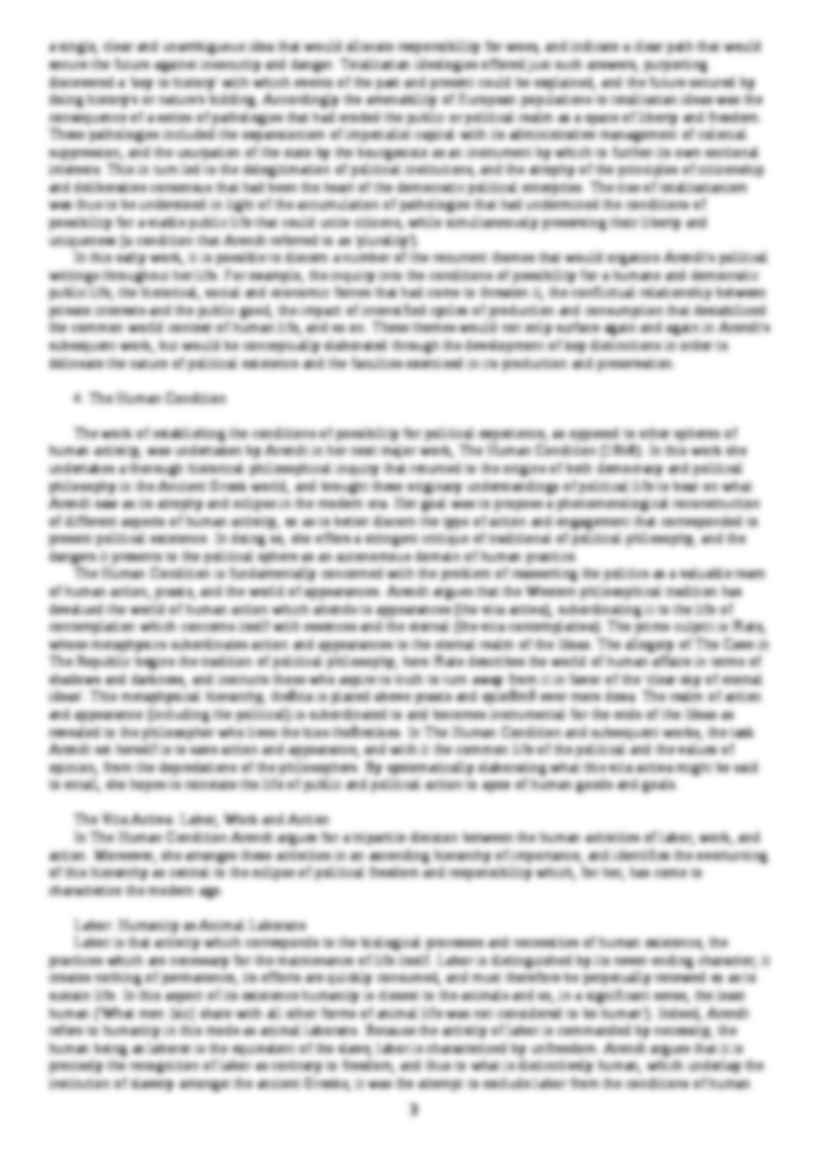Hannah Arendt (1906-1975)
1. Chronology of Life and Works
The political philosopher, Hannah Arendt, was born in Hanover, Germany, in 1906, the only child of secular Jews. During childhood, Arendt moved first to Königsberg (East Prussia) and later to Berlin. In 1922-23, Arendt began her studies (in classics and Christian theology) at the University of Berlin, and in 1924 entered Marburg University, where she studied philosophy with Martin Heidegger. In 1925 she began a romantic relationship with Heidegger, but broke this off the following year. She moved to Heidelberg to study with Karl Jaspers, the existentialist philosopher and friend of Heidegger. Under Jasper's supervision, she wrote her dissertation on the concept of love in St. Augustine's thought. She remained close to Jaspers throughout her life, although the influence of Heidegger's phenomenology was to prove the greater in its lasting influence upon Arendt's work.
In 1929, she met Gunther Stern, a young Jewish philosopher, with whom she became romantically involved, and subsequently married (1930). In 1929, her dissertation (Der Liebesbegriff bei Augustin) was published. In the subsequent years, she continued her involvement in Jewish and Zionist politics, which began from 1926 onwards. In 1933, fearing Nazi persecution, she fled to Paris, where she subsequently met and became friends with both Walter Benjamin and Raymond Aron. In 1936, she met Heinrich Blücher, a German political refugee, divorced Stern in '39, and the following year she and Blücher married in 1940.
After the outbreak of war, and following detention in a camp as an 'enemy alien', Arendt and Blücher fled to the USA in 1941. Living in New York, Arendt wrote for the German language newspaper Aufbau and directed research for the Commission on European Jewish Cultural Reconstruction. In 1944, she began work on what would become her first major political book, The Origins of Totalitarianism. In 1946, she published 'What is Existenz Philosophy', and from 1946 to 1951 she worked as an editor at Schoken Books in New York. In 1951, The Origins of Totalitarianism was published, after which she began the first in a sequence of visiting fellowships and professorial positions at American universities and she attained American citizenship. In 1958, she published The Human Condition and Rahel Varnhagen: The Life of a Jewess. In 1959, she published 'Reflections on Little Rock', her controversial consideration of the emergent Black civil rights movement. In 1961, she published Between Past and Future, and traveled to Jerusalem to cover the trial of Nazi Adolf Eichmann for the New Yorker. In 1963 she published her controversial reflections on the Eichmann trial, first in the New Yorker, and then in book form as Eichmann in Jerusalem: A Report on the Banality of Evil. In this year, she also published On Revolution. In 1967, having held positions at Berkeley and Chicago, she took up a position at the New School for Social Research in New York. In 1968, she published Men in Dark Times.
(…)
… accused of the instrumentalization of action, of its conflation with fabrication and subordination to an external teleology as prescribed by his metaphysical system). For Arendt, the activity of work cannot be fully free insofar as it is not an end in itself, but is determined by prior causes and articulated ends. The quality of freedom in the world of appearances (which for Arendt is the sine qua non of…
… aspects of the human condition are somehow related to politics, this plurality is specifically the condition - not only the conditio sine qua non, but the conditio per quam - of all political life' .
Another way of understanding the importance of publicity and plurality for action is to appreciate that action would be meaningless unless there were others present to see it and so give meaning to it. The…
… constructions which endure temporally beyond the act of creation itself. Work thus creates a world distinct from anything given in nature, a world distinguished by its durability, its semi-permanence and relative independence from the individual actors and acts which call it into being. Humanity in this mode of its activity Arendt names homo faber; he/she is the builder of walls (both physical and cultural…
… to history' with which events of the past and present could be explained, and the future secured by doing history's or nature's bidding. Accordingly the amenability of European populations to totalitarian ideas was the consequence of a series of pathologies that had eroded the public or political realm as a space of liberty and freedom. These pathologies included the expansionism of imperialist capital with…
... zobacz całą notatkę






Komentarze użytkowników (0)